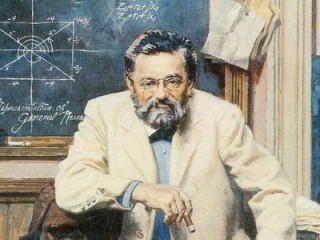
Charles Steinmetz biography
Date of birth : 1865-04-09
Date of death : 1923-10-26
Birthplace : Breslau, Province of Silesia
Nationality : German
Category : Science and Technology
Last modified : 2010-05-07
Credited as : Mathematician , and electrical engineer, Electric motors
The German-born American mathematician and electrical engineer Charles Proteus Steinmetz, by devoting himself to industrial research, made fundamental contributions to the development of both electricity and the industrial laboratory.
Charles Steinmetz was born Karl August Rudolf Steinmetz on April 9, 1865, in Breslau. His father worked for the government railway service, and Karl was encouraged to attend the university and pursue his intellectual curiosities. He had been deformed since birth and had lost his mother at the age of one year but found solace and excitement in the affairs of the mind. He entered the university at Breslau in 1883 and specialized in mathematics and the physical sciences. He also read widely in economics and politics, and in 1884 he associated himself with the Socialist party in Breslau. As he pursued his scientific education, he also continued his political activities, a pattern he was to continue throughout his life.
As ghost editor of the Breslau Socialist newspaper, People's Voice, Steinmetz attracted the attention of the police. In 1888, just as he had finished the work for his doctor's degree, he learned of plans for his arrest and fled to Switzerland. He never received his degree. He emigrated to the United States in 1889.
Steinmetz went to work in Yonkers, N.Y., for the electrical inventor Rudolph Eickemeyer, who put him to the task of improving alternating-current devices. In the course of this work he tackled the problem of hysteresis, or the loss of efficiency in electric motors due to alternating magnetism. There was some disagreement among electrical engineers whether such a loss even existed, and none had ever been able to measure it. Working from known data, Steinmetz applied mathematics of a very high level not only to demonstrate that hysteresis existed but to measure its exact effect in any given case. In 1892 he read two papers on the subject to the American Institute of Electrical Engineers.
One result of Steinmetz's growing reputation was his employment by General Electric Company in its consulting department. GE was then pioneering in the establishment of industrial research in the United States. The hiring of a mathematician of Steinmetz's caliber was thus a sign of the firm's growing recognition of the fact that it could not depend indefinitely upon buying patents that were independently and randomly arrived at but would have to begin a systematic search for innovation within the firm itself. He worked first at Lynn, Mass., but soon he was moved to the head plant at Schenectady, N.Y., and given the designation of consulting engineer. This position left him comparatively free to pursue his own researches into electrical phenomena.
In his work for GE, Steinmetz applied his unique grasp of mathematics to electrical problems. He preferred not to be tied too closely to the ongoing work of the research laboratory but continued to work on practical as well as theoretical problems: batteries, incandescent and arc lights, and the artificial propagation of lightning in the laboratory all received his attention. This last success, with its giant spark crackling across the laboratory, had a dramatic impact upon a public already convinced that science was a fertile source of "miracles."
Throughout these years Steinmetz maintained his interest in public service and refused to allow his experiments, scientific writing, and teaching responsibilities at Union University to prevent him from discharging his duties as a citizen. He followed the Russian Revolution of 1917 with interest and in 1922 wrote to Lenin offering his services to the Soviet Union. Steinmetz was president of Schenectady's school board (1912-1923) and common council (1916-1923). In 1922 he ran unsuccessfully for the office of state engineer on the Socialist and Farmer-Labor tickets. He died in Schenectady on Oct. 26, 1923.
















